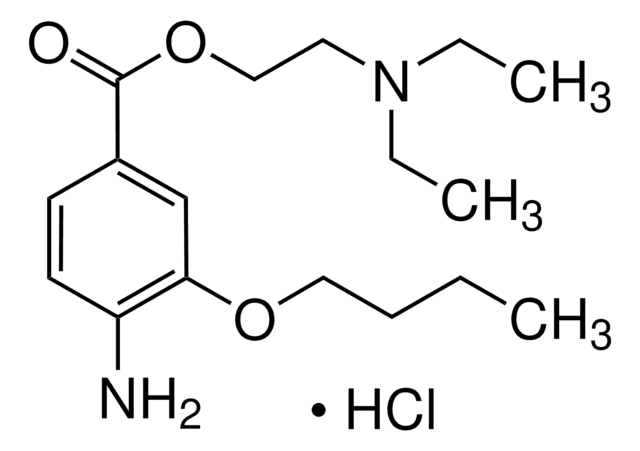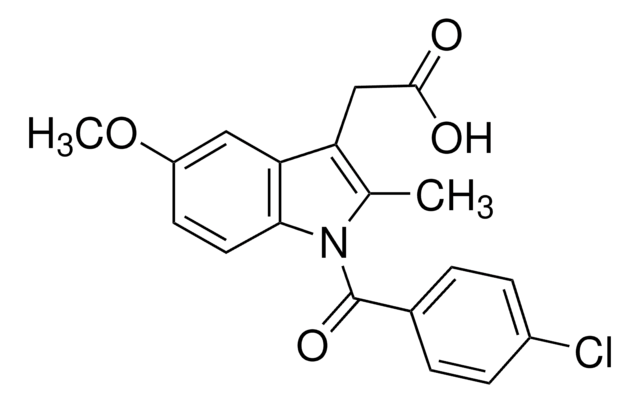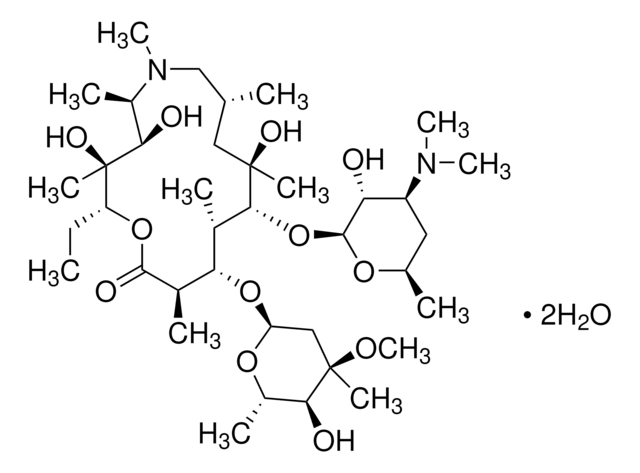Wichtige Dokumente
B9050
Benoxinat -hydrochlorid
meets USP testing specifications
Synonym(e):
4-Amino-3-butoxybenzoesäure-[2-(diethylamino)-ethyl]-ester -hydrochlorid, Oxybuprocain -hydrochlorid
About This Item
Empfohlene Produkte
Agentur
USP/NF
meets USP testing specifications
Qualitätsniveau
Form
solid
Anwendung(en)
pharmaceutical (small molecule)
SMILES String
Cl[H].CCCCOc1cc(ccc1N)C(=O)OCCN(CC)CC
InChI
1S/C17H28N2O3.ClH/c1-4-7-11-21-16-13-14(8-9-15(16)18)17(20)22-12-10-19(5-2)6-3;/h8-9,13H,4-7,10-12,18H2,1-3H3;1H
InChIKey
PRGUDWLMFLCODA-UHFFFAOYSA-N
Angaben zum Gen
human ... SCN10A(6336) , SCN11A(11280) , SCN1A(6323) , SCN2A(6326) , SCN3A(6328) , SCN4A(6329) , SCN5A(6331) , SCN7A(6332) , SCN8A(6334) , SCN9A(6335)
Suchen Sie nach ähnlichen Produkten? Aufrufen Leitfaden zum Produktvergleich
Lagerklassenschlüssel
13 - Non Combustible Solids
WGK
WGK 3
Flammpunkt (°F)
Not applicable
Flammpunkt (°C)
Not applicable
Persönliche Schutzausrüstung
dust mask type N95 (US), Eyeshields, Gloves
Hier finden Sie alle aktuellen Versionen:
Besitzen Sie dieses Produkt bereits?
In der Dokumentenbibliothek finden Sie die Dokumentation zu den Produkten, die Sie kürzlich erworben haben.
Unser Team von Wissenschaftlern verfügt über Erfahrung in allen Forschungsbereichen einschließlich Life Science, Materialwissenschaften, chemischer Synthese, Chromatographie, Analytik und vielen mehr..
Setzen Sie sich mit dem technischen Dienst in Verbindung.






